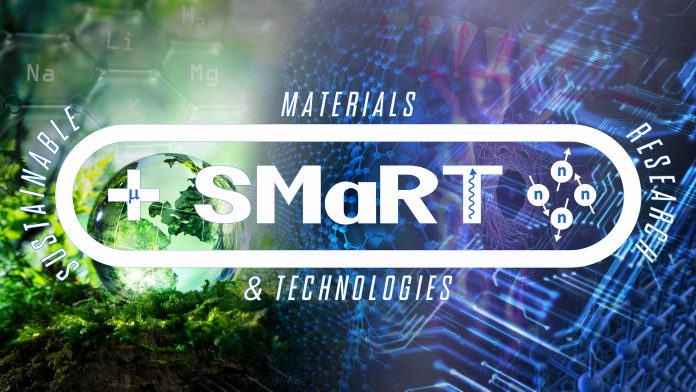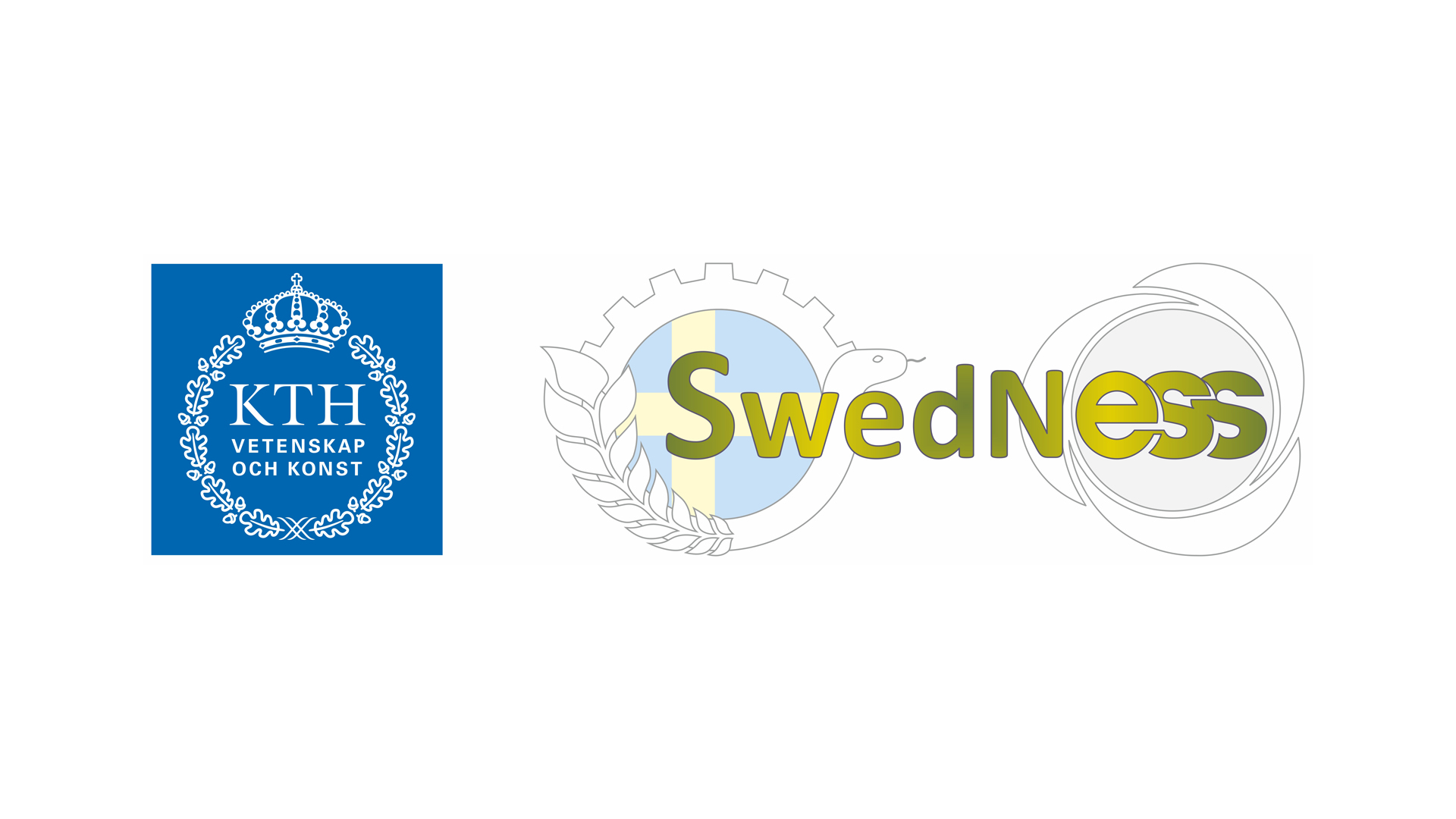The SMaRT research group at the KTH Royal Institute of Technology runs a comprehensive programme for the development sustainable materials and technologies, including energy and quantum materials.
Establishing a sustainable society is this century’s grand challenge. Here, one of the main obstacles is how to efficiently harvest, store and utilise green energy. To facilitate such a transition, new generations of advanced functional energy and quantum materials needs to be developed. This includes understanding and controlling material properties on an atomic, or even subatomic, length-scale. Only recently, technological advancement in materials synthesis and characterisation techniques have opened new possibilities for studying both structural and dynamic material properties on the length- and time-scales necessary for advancing the field. Here a new generation of large-scale research infrastructures with more powerful neutron, x-ray and muon sources have played an important role. This state-of-the-art research landscape is the main platform for the SMaRT research group at the KTH Royal Institute of Technology. We run a comprehensive scientific programme for advanced development of sustainable energy materials as well as novel quantum materials, studied mainly by large-scale techniques.
Harvesting sustainable energy has primarily focused on utilising nature’s own sources, like wind and solar power. For the former, team SMaRT is engaged in developing novel strong permanent magnets that do not need the rare-earth elements (e.g., neodymium: Nd) that are so difficult and expensive to extract from the earth’s crust. In the case of solar power, the area of photovoltaic (PV) cells/materials has remained a hot research theme for decades. The main appeal of this technology is that photons from our sun is the only form of incoming energy gained by our otherwise isolated planet. In fact, incoming solar energy is enough to cover all our needs, we just have to harvest it efficiently. To make photovoltaic cells even more attractive, they should become more efficient but especially also be less expensive to produce and obtain improved device lifetime. Team SMaRT is mainly studying so-called hybrid perovskite materials of the general form RNH3MX3 (R = CnH2n+1; X = halogen I, Br, Cl; M = Pb, Sn, Ge, etc.). Here the most famous member is CH3NH3PbI3 (or for short MAPbI3).
These materials are famous for reaching up to 25.5% efficiency while being relatively easy to manufacture and assemble into functional devices. However, two main concerns are related to their low photostability (lifetime) and the obvious harmful nature of lead-based compounds. Within our investigations we are exploring both established and new lead-free as well as mixed halide (e.g., I/Br) perovskites. Another key aspect is to study how ion dynamics induce changes in the atomic structure or even a microscopic phase separation that results in reduced performance and ultimately, device failure. To study microscopic ion diffusion, we have developed a novel method based on muon spin rotation (μ+SR). Such μ+SR method does not only allow us to study ion dynamics in bulk materials, but also to uniquely conduct depth-dependent profiles from thin films and complete multilayer devices, including their buried interfaces. This is currently the only technique available for such studies. Combining this with diffraction studies we can link atomic structure and ion dynamics, both as intrinsic material properties as well as during in situ/operando studies under illumination.
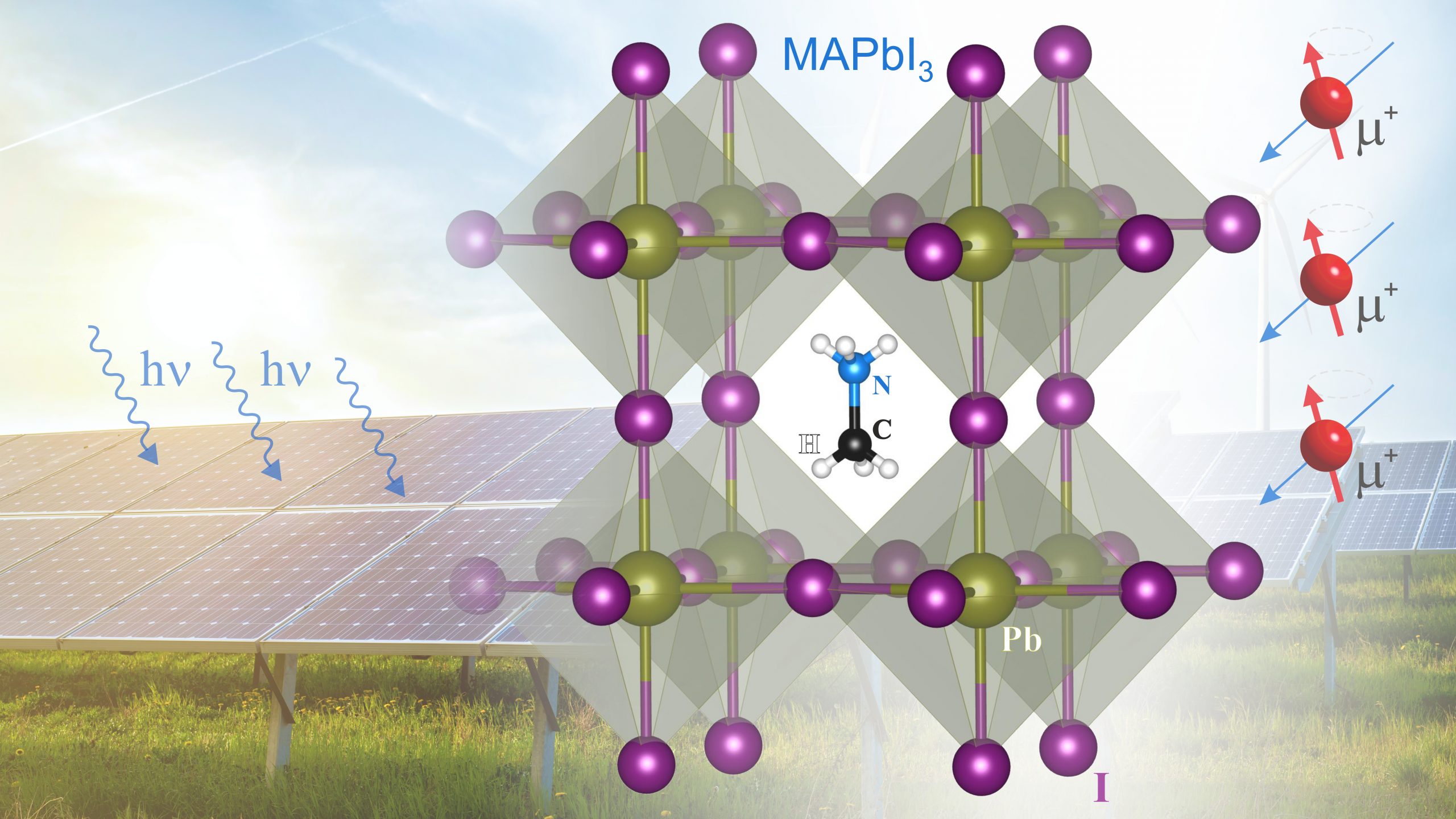
Energy Storage naturally makes us all think about rechargeable batteries that, with increasing rate, impact our everyday life via handheld electronics, household/garden tools, as well as in hybrid and electric cars. Despite huge developments in this field during last decades, we are still rather limited in energy density, lifetime as well as certain safety aspects. At present, majority of devices are so-called lithium (Li) ion batteries (LIB), where Li-ions diffuse between the cathode and anode through the electrolyte during charge/discharge cycles. Despite their efficiency, there are LIB concerns linked to the increase in raw-material price, limited availability (only 17 ppm of the Earth’s crust) and uneven geographical distribution of Li resources, as well as the negative environmental impact from its extraction process. This has led to a race for discovering alternative technologies, mainly using other more sustainable alkali(ne) metals, e.g., sodium (Na), potassium (K) and magnesium (Mg). In our research programme we are partly studying the established Li-ion battery materials (e.g., LiFePO4) along with several novel compounds. For the latter we currently focus on a new family of layered honeycomb oxides of the general form A2TM2TeO6 (A = Li,Na,K…, TM = Ni,Co,…) along with mixed alkali ion materials. Here it is important to emphasise that the goal is not to replace LIB with NIB/KIB but rather to find alternatives in order to avoid an undesirable environmental and political situation where we are simply replacing our previous dependence on fossil fuels with lithium. Further, for large-scale energy storage in connection with sustainable energy harvest, it is not feasible to rely on rechargeable batteries. Here another important technology, solid-state hydrogen (H2) storage, is our main target, where we tune the properties via nano-structuring of the material itself. Another approach is to use porous carbon as scaffolding materials for hosting the H-storage materials, thereby improving performance and reducing operating temperatures.
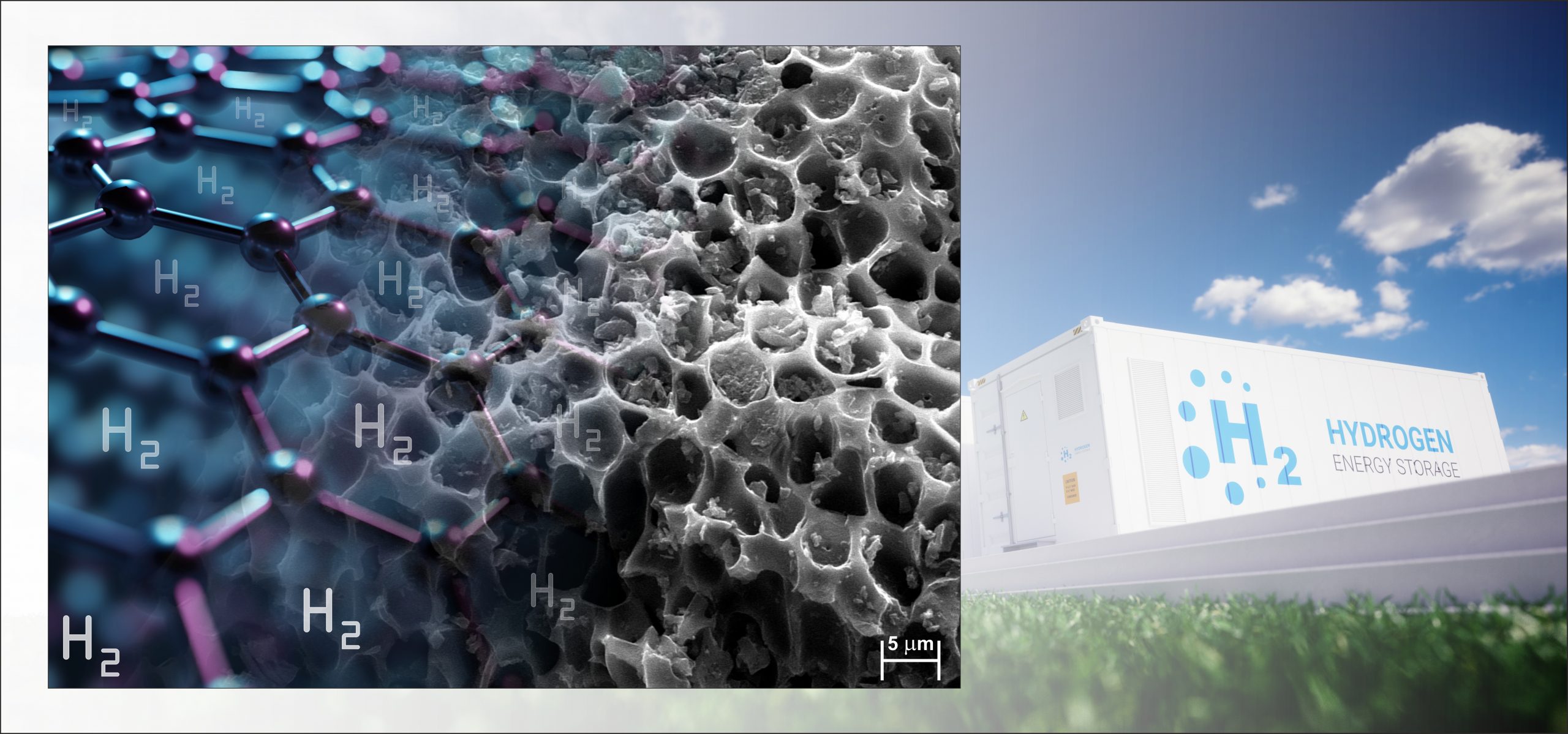
For storage materials, we employ a combination of neutron scattering and μ+SR techniques to correlate subtle structural transitions with the onset and evolution of the ion diffusion mechanism. Here the high cross section of the neutrons for light elements makes it possible to detect atomic position and dynamics of Li/Na/… or even H, which is virtually impossible by X-rays. We conduct such studies both for intrinsic material properties as well as for in operando studies during charge/discharge cycles. Finally, we focus on interface effects that for storage materials strongly limit the device performance. Our recent findings in nano-structured materials allow us to envision systematic surface engineering of energy storage materials using different surface coatings to optimise ion dynamics, charge transfer, electrochemical reactivity, and device performance.
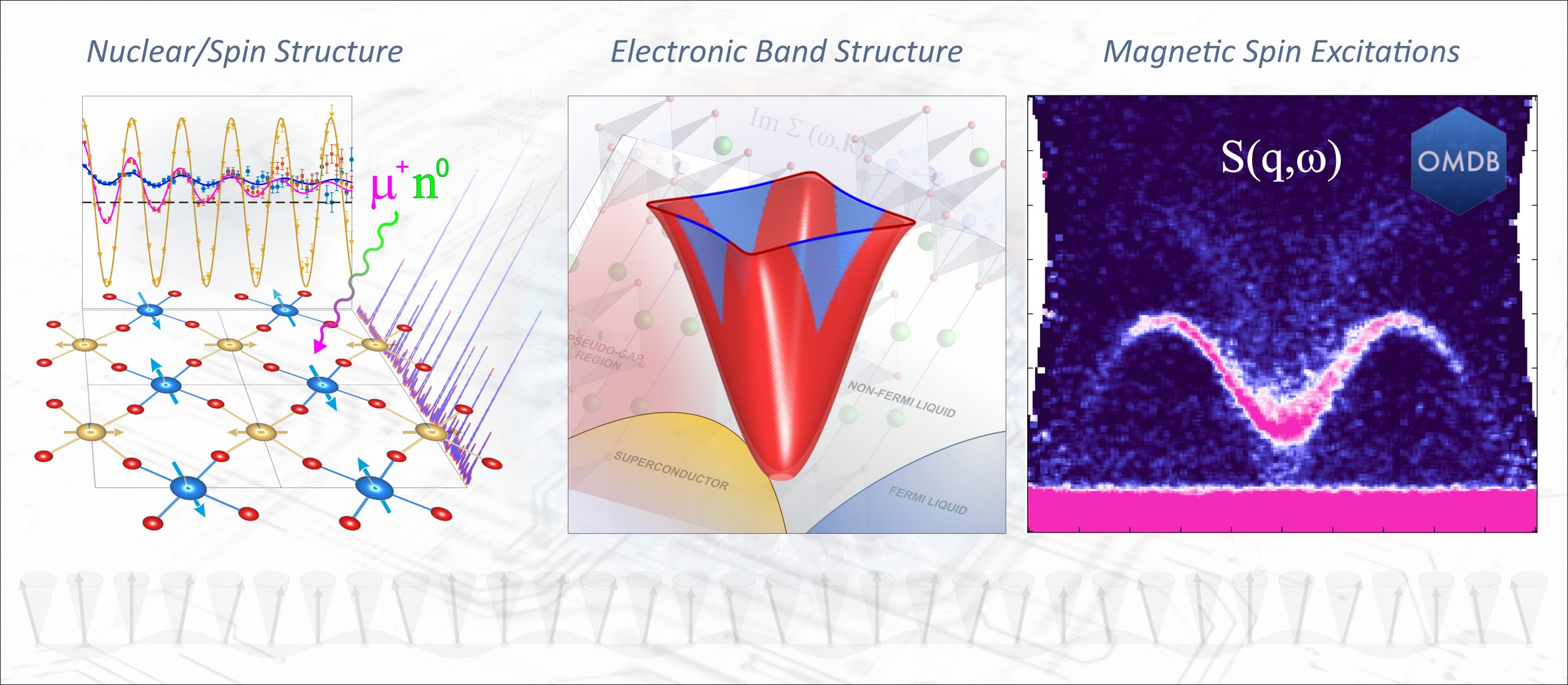
Quantum Materials are a very extensive group of compounds in which the focus for high-tech applications has shifted from simply charge into spin properties and correlations effects of the electrons. In our current society, large server halls, network, and other ICT, claim increasing energy consumption and is projected to constitute up to 21% of the global electricity demand by 2030. Hence, development of quantum materials is crucial for moving into more energy efficient spintronics and quantum computing. Our research programme deals with fundamental studies of low-dimensional magnets, high-temperature superconductors, multiferroics as well as and frustrated compounds hosting emerging properties like the quantum spin-liquid state. To understand these complex materials, the application of large-scale experimental techniques is absolutely imperative. For studies of short-/long-range spin order, μ+SR and neutron diffraction are the only direct techniques available. Further, for revealing detailed band structures angle-resolved photoemission (ARPES) is without doubt the sole method for probing electronic excitations, while inelastic neutron scattering (INS) detects magnetic ones. Team SMaRT have expertise within all these areas and techniques. Even if we are primarily experts within experimental science, we collaborate closely with the Nordic Institute for Theoretical Physics (NORDITA). Among other things, we partake in the development of the Organic Materials DataBase (OMDB), which contains calculated electronic and magnetic band structures for >40,000 materials. It also incorporates tools for materials informatics that allow us to search or predict new promising quantum materials for both material synthesis and our experimental characterisations. For the so-called metal organic frameworks (MOF), this is particularly interesting. MOF are a form of “spin-Lego” where we can fully tune quantum properties by interconnecting different organic ligands and substituting the metal ion carrying the spins. To further expand the OMDB’s capabilities in this area, current efforts include complementing the ab initio modelling with efficient state-of-the-art machine learning and AI predictive capabilities.
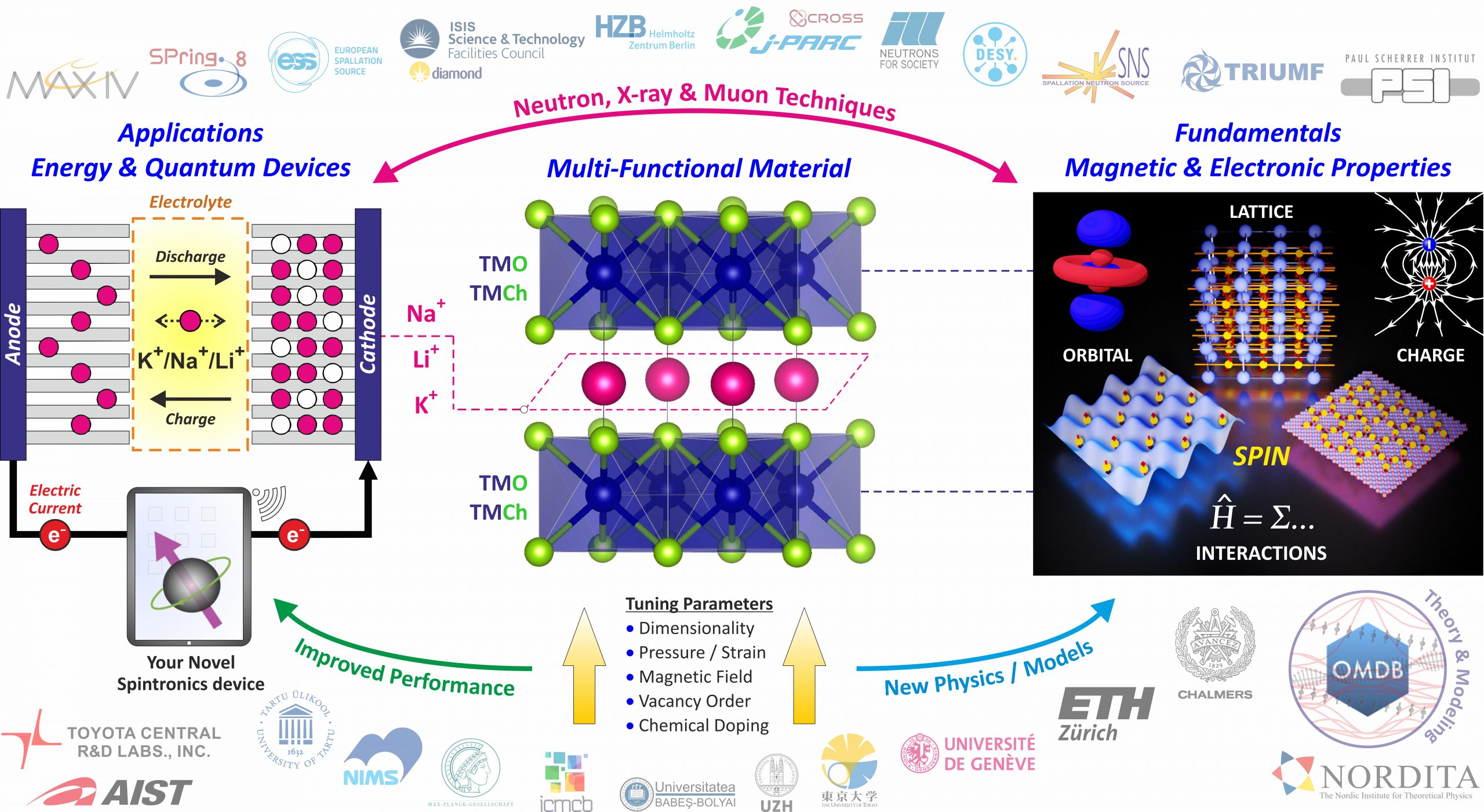
Multifunctional Materials display properties suitable for both energy and quantum applications. Within our research program we have several examples, for instance many battery cathode materials are also intriguing geometrically frustrated antiferromagnets at low temperatures. There are also particularly interesting cases, e.g., Na2Ni2TeO6 or NaxCoO2, where room-temperature ion dynamics and low-temperature fundamental spin properties are closely interconnected. Here an intriguing smörgåsbord of new science and potential applications appear, ready to be savoured. It should be emphasised that for any technological advance to occur, matching fundamental research must also be conducted. In this context we would like to highlight Prof. J.B. Goodenough that received the 2019 Nobel prize in chemistry for the LIB. In parallel, he also conducts high impact fundamental research within correlated electron physics (i.e., quantum materials).
Large-scale research facilities are the ultimate tools for scientists to investigate material properties. Neutron, muon and X-ray synchrotron/free-electron laser techniques allow us to study both structure on the sub-atomic length scale as well as ultra-fast dynamics. Sweden is currently making unparalleled investments in these characterisation tools with the development and construction of both the European Spallation Source (ESS, see photo below), a world-leading neutron source, as well as the first 4th generation synchrotron X-ray source, MAX IV. In addition, Sweden also created a dedicated hard X-ray materials science beamline (P21) at the PETRA III facility in Germany, where the academic host is placed at KTH under the newly formed Center for X-rays in Swedish Materials Science (CeXS).
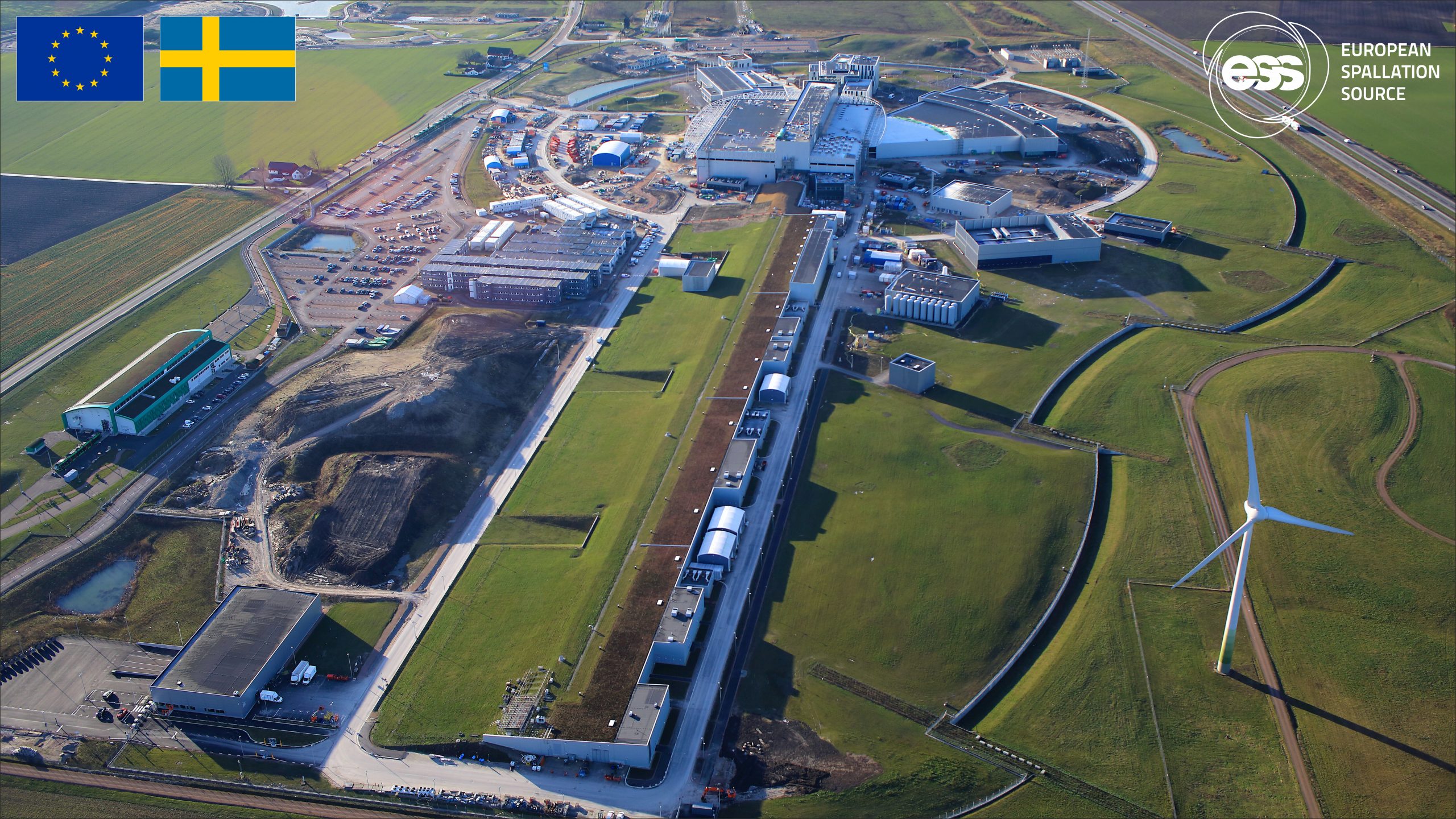
Team SMaRT conducts most of our experiments at large-scale infrastructures all around the world, including, e.g., PSI in Switzerland, J-PARC and SPring-8 in Japan, ISIS and Diamond in the UK, TRIUMF in Canada, and SNS/ORNL in the USA. Here we collaborate closely with the instrument and beamline teams that are all leading scientists within their respective techniques/fields, and they naturally also become co-authors of our research articles. Finally, team SMaRT is contributing to the technical development connected to ESS, PSI and PETRA III concerning novel sample environment setups as well as modelling/software tools (via OMDB). Evoke: Technology drives science, and vice versa!
Collaborations at large-scale facilities naturally cultivates broad research networks, and the SMaRT group cooperates with numerous academic institutions. In Sweden our two closest collaborators outside KTH are found in Chalmers (Prof. Y. Sassa) and NORDITA (Prof. A.B. Balatsky). Further, under the umbrella of education, we are collaborating nationally within the Swedish graduate school for neutron scattering (SwedNess), where KTH is a principal partner. Internationally we have several close collaborators, to mention just a few: ETH Zürich (Prof. V. Wood), Univ. Tokyo (Prof. T. Masuda), Univ. Zürich (Prof. J.J. Chang), CROSS (Dr. J. Sugiyama), and Max Planck Institute (Dr. M. Isobe). Moreover, to connect directly to future applications we work in partnership also with industry, e.g., AIST and Toyota CRDL in Japan. In a nutshell, our main goal is to conduct high impact science in order to advance our society towards a sustainable future. We therefore join forces with leading experts within all necessary fields. For team SMaRT, research is performed for the best of humankind and our planet, not as a path to increase our status as sole scientists. If you agree with our vision, please join our quest!
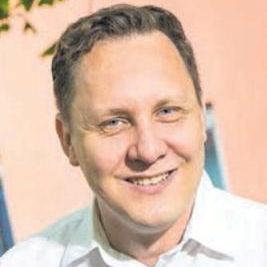
Funding:
- KTH Materials Platform
- Swedish Research Council (VR)
- Swedish Foundation for Strategic Research (SSF)
- Carl Trygger Foundation
- European Commission via MSCA

